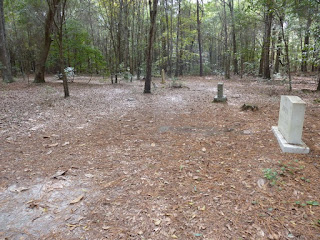Seriously, if Alabama weren't one of those states that enacted
stupid laws that do nothing but get legally employed foreign executives arrested, I'd think it must be a pretty nice place to live. Montgomery seemed just as nice as Selma, although larger and with more to do and more dining options.
My first stop was at the
Rosa Parks Museum, which is run by Troy University, a multi-campus school with one of its branches in Montgomery.
For those of you who, like me, watch college football and so know about the school but have no idea where it is, its main campus is in Troy, Alabama.
The Rosa Parks Museum is pretty small and is very tightly focused on the incident where Rosa Parks got arrested on a bus for not giving up her seat to white people, then the resulting
bus boycott by Montgomery's black population (with help from much of its white population). It was a good museum, and starts the tour with a "movie" of the bus Rosa was on, reenacting the confrontation, then moving on to stills and audio and other material about the boycott. Among the more obscure facts I learned was that a group of white residents of the city (bus company owners, maybe?) tried to sue the black residents for not riding the bus. I'm not sure what cause of action that would have been, but how weird is that? The lawsuit didn't go anywhere, but I think it highlights the frustration the city and bus company must have felt at losing all of the revenue.
Now, I've got to complain about what we learn about Rosa Parks in school. I feel I got duped about Rosa Parks as badly as I got
duped about the Pony Express. Maybe moreso, because Rosa and the bus boycott were really important events in the civil rights movement, while the Pony Express was an 18 month private boondoggle that cost its investors some money. For example, I was taught that Rosa was a little old lade who was tired after a long day and she just didn't want to get up. First of all, Rosa Parks was
43. That's 43, not 63 or 83! Second, yes she probably was tired after a long day. But she sure wasn't this helpless and defenseless little lady. She was the secretary of the Montgomery NAACP. And when she got arrested, some of Montgomery's most prominent
civil rights leaders and
attorneys came to bail her out of jail. She wasn't an innocent caught up in a storm, but someone who was surely aware of the work of civil rights workers and concepts like civil disobedience and passive resistance. Not that what she did is any less important; I can't imagine the courage it took to stand up to a busload of people yelling and police threatening. But Ms. Parks wasn't the little old lady I learned about in school.
My second major stop in Montgomery was the Old Oakwood Cemetery, which has graves dating from the mid 1700s to the present. On my travels this year, I've seen a few other cemeteries dating from the same era, but the carvings and decor of these gravestones were mostly quite different from what I saw along the New England and Canadian coasts. The men at the cemetery's office gave me a handout about the cemetery (which I think, but don't know, that they
got from the web, from some Alabama enthusiast's website). One of the men also offered to guide my car to some of the farther-off parts of the cemetery, and wound up giving me an impromptu tour, which was really nice of him. Here are some highlights, starting with the oldest marked grave:
The grave of a man who drowned in the river. The grave is shaped like waves, and carries a warning not to swim in the river:
The very sad graves of four brothers who ignored that warning, and all drowned on the same day in the river:
The family grave of a woman and all seven of her children who died in an epidemic:
A Confederate soldier cemetery. The Confederate flag these days usually stands for all sorts of ugliness, but I don't see a problem with it flying over the graves of people who died under it 150 years ago:
Old Oakwood's most famous occupant, Hank Williams. It was nice of him to put a putting green on his plot like that:
For some reason, several french soldiers from World War II are buried here. I don't know the story:
The old Jewish section:
And a handful of other interesting graves and markers:

























































